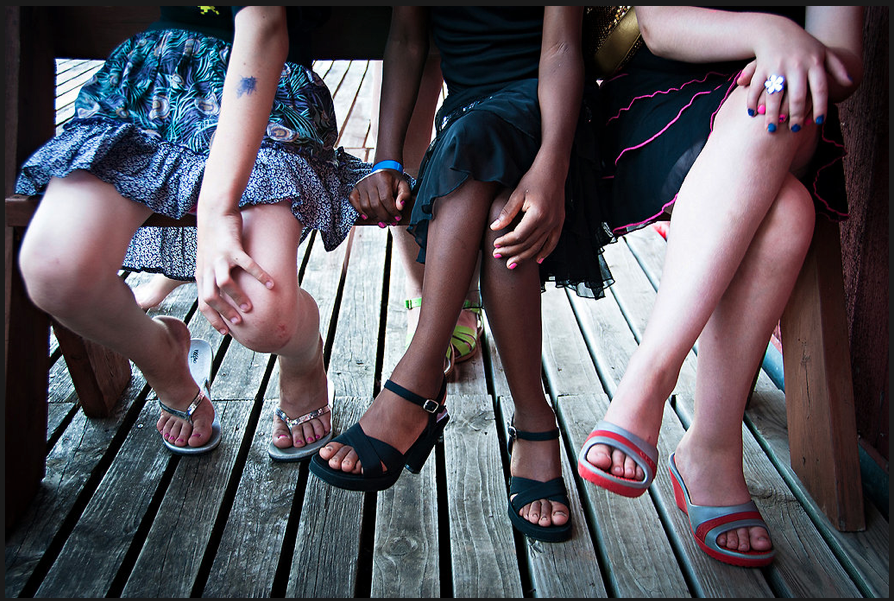 This Sunday’s New York Times magazine will hold an excellent article by Ruth Padawer about pink boys, which you can read today on the Times website. I spoke with Ruth many times over the last year as she researched this story, which turned out to be a thoughtful, insightful, and comprehensive story about parents raising sons who defy gender norms. (Interestingly, her editor decided that Ruth shouldn’t feature Sam because he, no longer being a dress-wearer, was not enough of a pink boy! It’s true…he’s more of a vibrant purple these days.) The article is beautifully illustrated by Lindsay Morris’s evocative photos of young boys in feminine dress. I encourage you to read it and add your voice to the comments at the end. Many thanks to Ruth Padawer for this fine piece of journalism, as well as her generosity of spirit and open heart.
This Sunday’s New York Times magazine will hold an excellent article by Ruth Padawer about pink boys, which you can read today on the Times website. I spoke with Ruth many times over the last year as she researched this story, which turned out to be a thoughtful, insightful, and comprehensive story about parents raising sons who defy gender norms. (Interestingly, her editor decided that Ruth shouldn’t feature Sam because he, no longer being a dress-wearer, was not enough of a pink boy! It’s true…he’s more of a vibrant purple these days.) The article is beautifully illustrated by Lindsay Morris’s evocative photos of young boys in feminine dress. I encourage you to read it and add your voice to the comments at the end. Many thanks to Ruth Padawer for this fine piece of journalism, as well as her generosity of spirit and open heart.
Participate in a Study on Gender-Nonconforming Kids
I was contacted recently by Riley Graham, a graduate student in the School of Education at Mills College in Oakland, CA, about her study: The Young Child’s Independence in Expressing Gender Nonconformity.
Riley is looking for parents or legal guardians of gender-nonconforming children between the ages two and eight to participate in the study, which is about how young gender-nonconforming or gender-questioning children express their gender identity in preschool. She said: “Your assistance in this study is very important, and may contribute to making preschool a more welcoming and inclusive place for young gender nonconforming children.”
The study will look at:
How the preschool environment might affect young gender nonconforming children’s ability to express their gender identity
How the preschool teacher might affect young gender nonconforming children’s ability to express their gender identity
What the connection between parent or legal guardian involvement in supportive services, e.g. therapy, listserv and their positive reports of support in preschool and by the teachers might be
I think that participating in this study is a great opportunity for caretakers to speak about their experiences, and potentially to make a difference as we show the benefits of family support for kids who are different.
Click here to complete the anonymous online survey. (It should take 10-30 minutes to complete; upon completion of survey, you will be entered into a raffle for a $100 amazon.com gift certificate.)
Questions? contact Riley Graham at rgraham@mills.edu.
Good News and Gratitude
Do you ever get the sense that things are moving?
In the last month, our school brought in trainers from Our Family Coalition, the LGBT advocacy and education organization. They also sent eight—eight—faculty and staff members to a 2 1/2 day training with Keshet, the organization working toward LGBT inclusion in Jewish life.
The school is honoring the commitments that they made last year. We are so, so grateful. And eager to see what happens next.
In other good news, I’ve finally added a book list to my website. I frequently get requests from readers about books—for themselves, for their kids, for their doctors and family members and schools. Over time I’ve compiled a list of affirming books that I think are helpful, stimulating, and often beautiful. The list is roughly organized according to age of audience—board books (age 1-3), picture books (age 3-8), chapter books (8-12), middle grade books (ages 11-14), young adult books (high school), and adult books.
As I write and speak publicly about issues of gender, I am aware that my topic can also be a metaphor for all the ways kids can be different. And so I’ve included books that address not only gender identity and LGBT families, but sensory processing disorder, race, diversity and nonconformists of all sorts, and, of course—and sadly—bullying. Whether or not any particular issue applies to a particular child, books about difference of any kind can be helpful for understanding and accepting all difference. This is why it’s so important that we not only read a broad range of these types of books to our own children, but that we introduce these books into our schools, libraries, doctors’ waiting rooms, local bookstores, and anywhere else we can think of to share them with the wider world.
Take a look at the list and see what you think of these books. If you have a book to recommend for my list, let me know! If I like it, I’ll add it to the list.
In gratitude,
Sarah
- « Previous Page
- 1
- …
- 4
- 5
- 6
- 7
- 8
- …
- 21
- Next Page »



